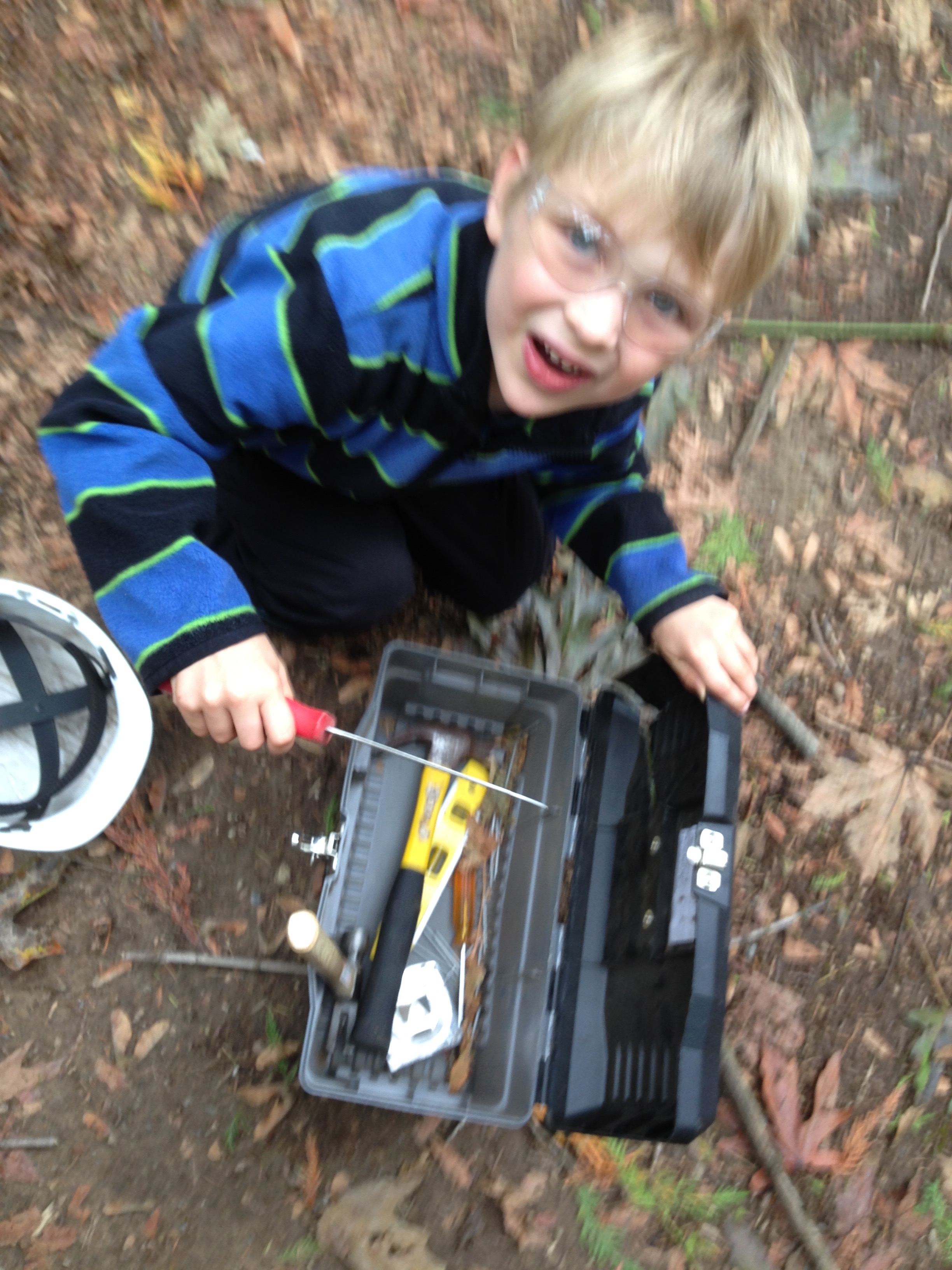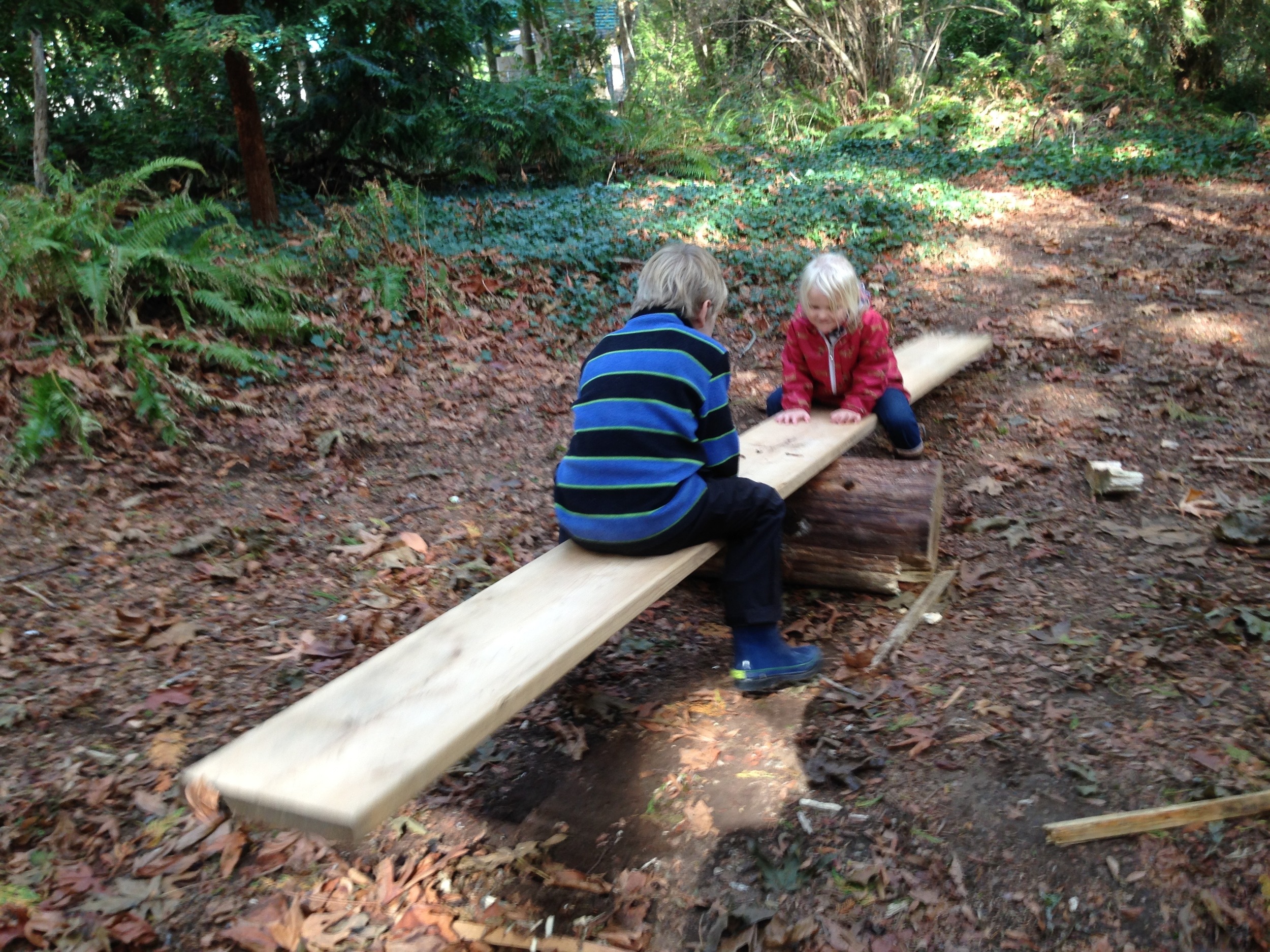How can our new-kind-of schools help cultivate adults? Step one: give kids unstructured time.
(Today's the first installment in a series on the question of how to raise an adult. I'm drawing extensively from Julie Lythcott-Haims book of that name — my thanks to Prof. Lythcott-Haims for her work!)
As evolutionary psychologist Peter Gray has persuasively argued, the urge to play is the primary evolutionary adaptation to prepare juveniles for adulthood. Indeed, other mammals play, too — but perhaps none more than our species.
And parts of our society are squeezing out play. In the last few decades of U.S. history, play has morphed from an unstructured activity to a formal, structure, supervised enterprise.
This is bad for kids.
How can our schools bring back unstructured play?
In school, we can make time for it: give students perhaps an hour a day of outdoor time (regardless of the weather) in which to run, skip, jump, dash, and make merry. Climb in trees! Splash through puddles! Wrestle, play games, make-believe! (For more on this, see our plans for an adventure playground on school grounds, and the series of posts on the book How to Raise a Wild Child.)
Children's lives are (in the middle-class population I work with) overscheduled. Free play is dying in part because there's no time for it. This we can definitely fix.
In school, we can prompt kids to do it — and maybe even give them a little instruction. I know what you're thinking: if an adult is participating in it, it's not unstructured play. I, too, once thought this, and was horrified to hear there was a company — Playworks — that was teaching kids how to play at recess.
Ridiculous! Preposterous!
And then I read that Lenore Skenazy, the progenitor of the "free-range kids" movement, was a convert. Her brief article describing her support for Playworks — Even ‘free-range kids’ could use help with recess — is excellent reading.
Play is a natural, spontaneous human activity. Forms of play, however, are also cultural activities passed from kid to kid through the ages. A single group of kids, by themselves, may not invent the rich diversity of play ideas that is available to them.
Quote Skenazy:
We may like to think of play as innate, but what’s innate is the desire to play. It isn’t innate to come up with the rules of four square, or a rhyme about a wardrobe malfunction. Those are things handed down from generation to generation.
When they’re not, it is like a lost language. If a parent speaks Spanish, but not to her kids, the kids don’t automatically learn it. Likewise, just because we all knew how to organize a game of “Mother May I?” doesn’t mean today’s kids will, if they haven’t been taught by the older kids, or even just watched them play it.
So we might teach delightful games to play, provide costumes for imaginative play, and encourage them to do it. Kids can be lazy, and just want to lay around — and part of our job is prompting them to get over their short-term wants, and into things that will bring them lasting joy.
After school, we can limit homework. Grade schoolers should have next-to-no homework — and I'm not convinced that middle and high schoolers ought to have much more.
We have names for adult jobs that demand more of our time than the 40 hours spent at the work site — we call them stressful jobs, jobs that'll burn you out. They are, frequently, bad jobs.
Going to school should not be a bad job. Long slogs of homework should be an exception, not a norm.
This may necessitate lengthening the school day. But I wonder if parents, at least, would be happy to make this trade, if it means that their time with their kids can be less tense and drillmaster-y. It's not fun to have to, night after night, force your kid to do worksheets.
Finally, throughout a child's K–12 education, we can help work with parents to cultivate a culture of free play. I wonder if, to this end, the book How to Raise an Adult might be good mandatory reading. We can teach the principles in this book, and conduct the sort of Socratic seminars with parents that we do with their kids.
And we can be even more helpful: help parents organize to get kids together to play at the park, have cookouts, have campouts.
And we can invites parents to share their struggles with bucking the trend: a squeaky wheel gets the grease, but the nail that sticks out will be hammered. Parental peer culture can be intense, and rejecting the norm of helicopter parenting might invite antagonism from other parents. We, perhaps, can help create a tribe of like-minded parents who support one another through difficult choices.
If a new kind of school can succeed at doing some of these things, I wonder if we can bring back the culture of unstructured play time that nurtures healthy kids, and healthy adults.
(Image courtesy of appetiteforeducation.com — thanks, guys!)








